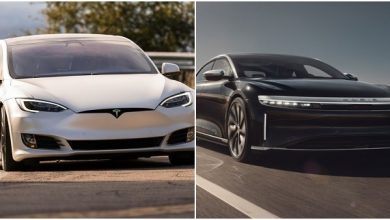Surge in global demand for personal mobility brings new momentum to two-wheeler industry, says Frost & Sullivan
By the end of 2020, China could overtake India and become the world’s biggest 2W market, creating major growth opportunities

Frost & Sullivan’s recent analysis, COVID-19 Impact Assessment, Recovery Road, and Growth Opportunities for the Global Two-wheeler Industry, 2019–2025, finds there is pent-up demand and a growing need for personal and cost-effective mobility solutions due to the pandemic. Two-wheeler (2W) sales across the globe are rapidly gaining momentum, even faster than passenger vehicles. The study examines the COVID-19 impact on production, sales, and OEM strategies. It also shares insights on recovery and future growth prospects in key technology areas, and the market forecast across seven regions: North America, South America, Africa, EU-27, Association of Southeast Asian Nations (ASEAN), Asia-Pacific (APAC), and South Asia. By 2025, the global 2W market is estimated to reach 63.9 million units from 56.1 million in 2019.
“South Asia’s dominance of the global 2W market is set to continue until 2025, with global sales expected to rise quickly. Even though the demand from ASEAN markets remains stable, the global unit sales share of Africa and South America will increase,” said Viroop Narla, Program Manager, Mobility Practice at Frost & Sullivan. “EU-27, China, and some Association of Southeast Asian Nations (ASEAN) markets could rebound faster than India, South America, and the majority of Asian countries where the pandemic is still a threat. By the end of 2020, China could overtake India and become the world’s biggest 2W market.”
Narla added: “The 2W market holds the key to enabling mass adoption of electric vehicles in the world, as private customers benefit from hassle-free and economical ownership, while fleet companies will also benefit from the low cost of transportation. Cooperation between companies engaged in charging, battery swapping, and vehicle maintenance will enable a transition to a successful electric vehicle ecosystem, as the simplicity of the 2W is the key to unlocking the future of EV transportation.”
Despite being negatively impacted by the pandemic, the future looks bright for the two-wheeler industry and presents immense growth prospects for market participants involved, including:
- OEMs should consider introducing advanced features in mass-market vehicles to increase penetration, especially in high-sales-volume markets. The majority of connected and rider safety technologies are primarily targeted at only the premium vehicles segment.
- OEMs and other ecosystem players should capitalize on the opportunity that 2W provides to enable a massive scaling up of micro-mobility and last-mile delivery services due to lower delivery costs.
- OEMs should launch vehicles before the growth phase for EVs and leverage existing vehicle platforms in EV manufacturing to accelerate development.
- OEMs should prioritize digital tools to empower staff to build new customer touchpoints and enable a complete online customer journey from virtual showrooms and configurations to payments and delivery.
- OEM sales strategies should include new retail solutions, including subscription and leasing, as an integral part of the process as new customer demographics move toward asset-light models.
COVID-19 Impact Assessment, Recovery Road, and Growth Opportunities for the Global Two-wheeler Industry, 2019–2025 is the latest addition to Frost & Sullivan’s Automotive & Transportation research and analyses available through the Frost & Sullivan Leadership Council, which helps organizations identify a continuous flow of growth opportunities to succeed in an unpredictable future.





